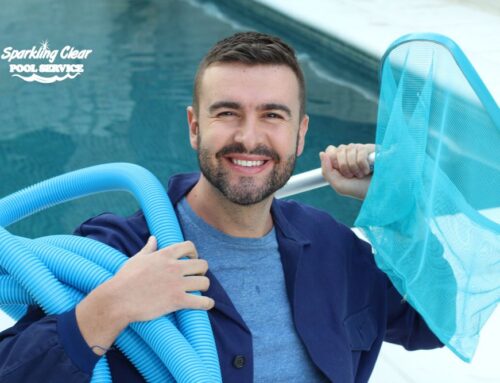As a pool owner, you may have found that on several occasions you were excited about using your pool, only to find that the water became suspiciously murky. When algae sabotages a nice day at the pool, it can be frustrating. All pool owners will be aware of blue-green algae that quickly turns your clear pool into a muddy mess. It’s easy to ignore a little cloudiness by the stairs, but overlooking algae for too long can end up costing you extra time and money to restore your pool water. Take a look at what you should know about swimming pool algae and how to prevent your pool water from getting murky. A little bit of swimming pool maintenance and care can help extend the life of your pool.
Causes of algae
Algae spores are continually brought into the pool through wind, rain, contaminated equipment, and even contaminated swimwear. When conditions are right, an algae bloom can occur within a matter of hours. A lack of good circulation, filtration, and sanitation are usually contributing or primary causes of pool algae. Another common cause of algae is when the chlorine levels drop.
How are algae harmful?
Although algae are not necessarily harmful to swimmers, it does create an eyesore as well as an unpleasant swimming environment. Also, if neglected over a long period, bacteria associated with algae can be a health concern. Algae growth not only looks unsightly but is considered a hazard to public health because it can attract mosquitoes and other insects. Because algae growth becomes a host for various pathogens, any signs of growth should be treated without delay.
In regards to harming your equipment, running the filter when the pool is covered with algae can clog up the filter and even damage it permanently. Pool owners must be careful to remove algae to prevent damage to their equipment.
How can algae be prevented?
The best way to save time and money cleaning up algae is to prevent algae growth in the first place. To prevent growth, you can test your water regularly to ensure that the chemical balance is correct. Since algae grow in optimum conditions, you can maintain your pool conditions to make it toxic for algae growth. An elevated pH and low chlorine levels are the most common causes of algae growth. In addition to routine sanitation, you can use algaecides to prevent algae growth.
How to get rid of algae in pools
No matter how well-maintained your pool chemicals are, algae sports will always be present. They will find their way into your pool via wind, rain, and debris. Treatment involves making sure that those algae spores are not able to bloom, which is when you see the green color emerge. If you suspect that you have algae blooms in your pool, it is vital to schedule service as quickly as possible. Untreated algae is a health hazard to anyone who uses the pool.
Talk to your pool cleaning specialist to ensure you are doing all you can to keep algae at bay. At Sparkling Clear Pool Service, we understand what it takes to keep a pool clean, sanitary, and well-maintained. Be sure to contact us on 214-361-0255 for all of your pool maintenance needs in McKinney, Allen, Frisco, and beyond!






